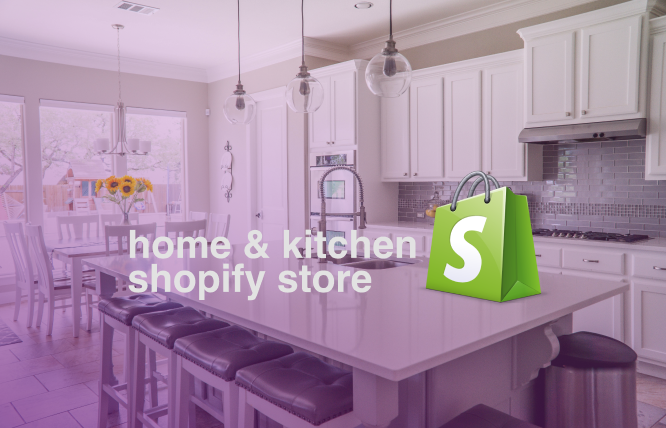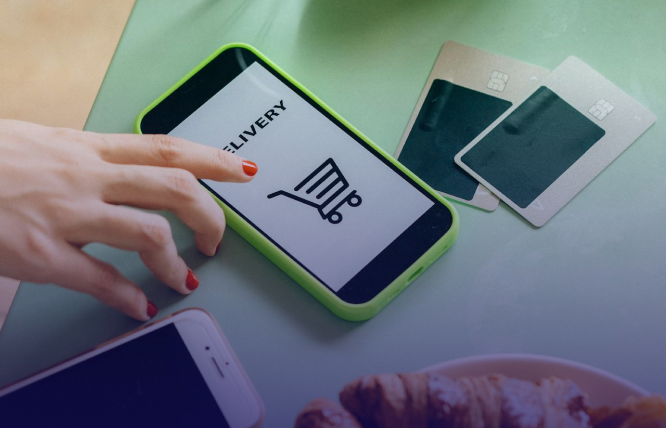Introduction
Online purchasing is growing in popularity and consumers are more inclined to buy goods and services online. Home and kitchen appliances are no different. In this article, we will discuss the steps of creating a home and kitchen store on Shopify.
Home and kitchen stores on Shopify are gaining popularity as more consumers prefer making purchases online rather than going to the shop physically. According to Shopify, there are currently 27,279 Shopify live stores in the kitchen and home category. As the paradigm of purchasing shifts completely towards online, home and kitchen stores on Shopify are gaining traction.
In this article, we will discuss the steps necessary before you start getting the store set up and some tips you can incorporate to ensure success for your store.
Steps to Creating a Home & Kitchen Store on Shopify
Decide on a Target Audience
The first step in creating a successful home and kitchen store on Shopify is to decide on your target audience. Understanding who your customers are – whether they are budget-conscious shoppers, luxury buyers, or DIY enthusiasts – will guide your product selection, branding, and marketing strategies. Define your target market by considering factors like age, income level, lifestyle, and preferences, which will help you tailor your store to meet their specific needs.
Find a Business Idea & Choose Your Products
Once you have identified your target audience, it’s time to find a business idea and choose the products you want to sell. Consider what is trending in the home and kitchen niche, as well as what products align with your audience’s needs. This could range from eco-friendly kitchen gadgets to luxury home decor items. Conduct market research to identify gaps in the market and select products that have high demand but low competition. Make sure your product selection is cohesive and aligns with the overall theme of your store.
Choose an E-Commerce Platform
Shopify is a powerful and user-friendly e-commerce platform that offers everything you need to create and manage your online store. Choose Shopify as your e-commerce platform because it provides customisable themes, secure payment processing, and robust tools to manage your inventory, orders, and customers. Additionally, Shopify offers a variety of apps and integrations that can enhance the functionality of your store, such as SEO optimisation, email marketing, and customer reviews.
Design Your Brand
Designing a strong brand is crucial to standing out in the competitive home and kitchen market. Your brand should reflect the values and aesthetics that resonate with your target audience. This includes creating a memorable logo, choosing a colour scheme, and developing a consistent tone of voice. Your branding should be evident in every aspect of your store, from your website design to your packaging and marketing materials. Consider hiring a professional designer or using Shopify’s built-in tools to create a visually appealing brand that communicates quality and trust.
Determine Your Business Structure
Before you officially launch your home and kitchen store, you will need to figure out your business structure. This could be a sole proprietorship, partnership, LLC, or corporation, depending on your business goals and the level of liability protection you need. Each structure has its own legal and tax implications, so it is important to consult with a legal or financial advisor to choose the right one for your business. Once you have decided, you will need to register your business with the appropriate government authorities and obtain any necessary licenses or permits.
Set Up Your E-Commerce Website
With your business structure in place, it is time to set up your e-commerce website on Shopify. Choose a theme that aligns with your brand and is optimised for user experience. Customise the layout, fonts, and colours to create a visually appealing and easy-to-navigate site. Add high-quality product images and detailed descriptions to showcase your products effectively. Make sure to include essential pages like About Us, Contact Us, and Shipping & Returns policies to build trust with your customers. Additionally, ensure that your website is mobile-friendly, as many customers will shop from their smartphones or tablets.
Connect a Payment Gateway
A payment gateway is essential for processing customer payments securely. Shopify offers several payment gateway options, including Shopify Payments, PayPal, and Stripe. Choose a payment gateway that is reliable, secure, and easy for your customers to use. Ensure that the payment gateway you select supports multiple payment methods, such as credit cards, debit cards, and digital wallets, to accommodate a wide range of customers. Don’t forget to consider transaction fees and payout schedules when choosing your payment gateway.
Get Your Store Ready for Launch
Before launching your home and kitchen store, it’s important to test everything to ensure a smooth customer experience. Double-check that all links are working, product descriptions are accurate, and your checkout process is seamless. Set up your store’s analytics to track visitor behaviour and sales performance. You should also ensure that your store’s policies, including shipping, returns, and privacy, are clearly communicated to customers. Finally, prepare your inventory and fulfilment processes to handle orders efficiently once your store goes live.
Launch Your Online Store
Once everything is in place, it is time to launch your online store. Choose a launch date and create hype around it through email marketing, social media, and other promotional channels. Offer special launch discounts or promotions to attract customers and generate sales. Monitor your store’s performance closely during the first few days and be ready to make any necessary adjustments. A successful launch will set the tone for your store’s growth and help you establish a strong customer base.
Market Your Online Store
After launching, continuous marketing is key to driving traffic and increasing sales. Use a mix of digital marketing strategies, including SEO, social media marketing, email campaigns, and influencer partnerships, to reach your target audience. Create engaging content that resonates with your customers, such as blog posts, videos, and how-to guides related to home and kitchen products. Additionally, consider using paid advertising on platforms like Google Ads and Facebook to reach a wider audience. Regularly analyse your marketing efforts to identify what is working and make data-driven decisions to optimise your campaigns.
Tips to Drive Your Home & Kitchen Store on Shopify to Success
Focus on High-Quality Product Photography
High-quality images are crucial for attracting customers and conveying the quality of your products. Use professional photography or invest in a good camera to take clear, detailed photos that showcase your products from multiple angles. Consider including lifestyle images that show your products in use, as this helps customers visualise them in their own homes.
Offer Exceptional Customer Service
Providing excellent customer service can set your store apart from competitors. Be responsive to customer inquiries, offer flexible return policies, and provide clear and accurate information about your products. Consider adding a live chat feature to your Shopify store to assist customers in real-time time, enhancing their shopping experience and building trust.
Leverage Social Media Marketing
Social media is a powerful tool for driving traffic to your store and building a loyal customer base. Create accounts on platforms like Instagram, Pinterest, and Facebook, where you can share engaging content, such as home decor inspiration, product features, and customer testimonials. Use social media to interact with your audience, run promotions, and collaborate with influencers to reach a broader audience.
Implement Email Marketing Campaigns
Email marketing is an effective way to nurture leads and convert them into customers. Build an email list by offering incentives like discounts or free resources in exchange for email sign-ups. Use email campaigns to keep your subscribers informed about new product launches, special promotions, and exclusive offers. Personalised email marketing can also help increase customer loyalty and repeat purchases.
Optimise Your Store for SEO
Search engine optimisation (SEO) is essential for improving your store’s visibility in search engine results. Optimise your product descriptions, titles, and meta tags with relevant keywords that your target audience is likely to search for. Additionally, create informative and engaging blog content related to home and kitchen topics to attract organic traffic to your site. A well-optimised store will help you rank higher on Google, driving more traffic and sales.
Utilise Shopify Apps to Enhance Functionality
Shopify offers a wide range of apps that can help you streamline operations, enhance customer experience, and boost sales. Consider using apps for abandoned cart recovery, customer reviews, product recommendations, and loyalty programs. These apps can automate tasks, provide valuable insights, and increase your store’s overall efficiency and profitability.
Create a Seamless Mobile Shopping Experience
With a significant portion of online shopping happening on mobile devices, it’s crucial to ensure that your store is fully optimised for mobile. Choose a responsive Shopify theme that looks great on all devices and test your store’s functionality on smartphones and tablets. A seamless mobile shopping experience will reduce bounce rates and increase conversions, as customers will find it easier to navigate and make purchases on your site.
Offer a Variety of Payment Options
Make it easy for customers to complete their purchases by offering multiple payment options. In addition to credit and debit cards, consider integrating alternative payment methods like PayPal, Apple Pay, and Google Pay. Providing diverse payment options can reduce cart abandonment and accommodate a wider range of customer preferences.
Regularly Analyse Store Performance
Use Shopify’s built-in analytics tools to monitor your store’s performance and make data-driven decisions. Track metrics such as traffic sources, conversion rates, average order value, and customer behaviour. Regular analysis will help you identify areas for improvement, optimise marketing efforts, and adjust your strategy to better meet your business goals.
Encourage Customer Reviews & Testimonials
Positive reviews and testimonials can significantly influence potential buyers’ decisions. Encourage satisfied customers to leave reviews by following up with a thank-you email or offering a discount on future purchases. Display these reviews prominently on your product pages to build trust and credibility with new visitors.
Conclusion
Creating a home and kitchen store on Shopify is simple but there are several things to keep in consideration. If you are looking for a Shopify expert to help set up your store, FuturByte has got you covered. Our team of Shopify developers will help you create the perfect online store, keeping your requirements in mind. Contact us today for a free consultation.
Also Read: Hire Someone to build Shopify Store
Frequently Asked Questions
While Shopify itself does not require a business license, your local, state, or national regulations might. It is essential to research and understand the licensing requirements in your area before launching your store.
Focus on unique branding, high-quality product photography, detailed descriptions, and exceptional customer service. Also, leveraging social media and SEO can help increase visibility and set your store apart from competitors.
Popular options include Shopify Payments, PayPal, Stripe, and Square. It is important to offer multiple payment options to cater to a broader audience and increase conversion rates.
Use sturdy, protective packaging, such as bubble wrap and packing peanuts, to prevent damage during transit. Consider offering insurance on shipping and using carriers that specialise in handling fragile items.
Yes, Shopify allows you to sell internationally. However, you need to consider shipping costs, customs regulations, and currency conversions. You may also want to provide language and currency options for international customers.
Shopify offers built-in inventory management tools that allow you to track stock levels, set up alerts for low stock, and manage multiple variants of a product. You can also integrate third-party inventory management apps for more advanced features.
Have questions or feedback?
Get in touch with us and we‘l get back to you and help as soon as we can!




